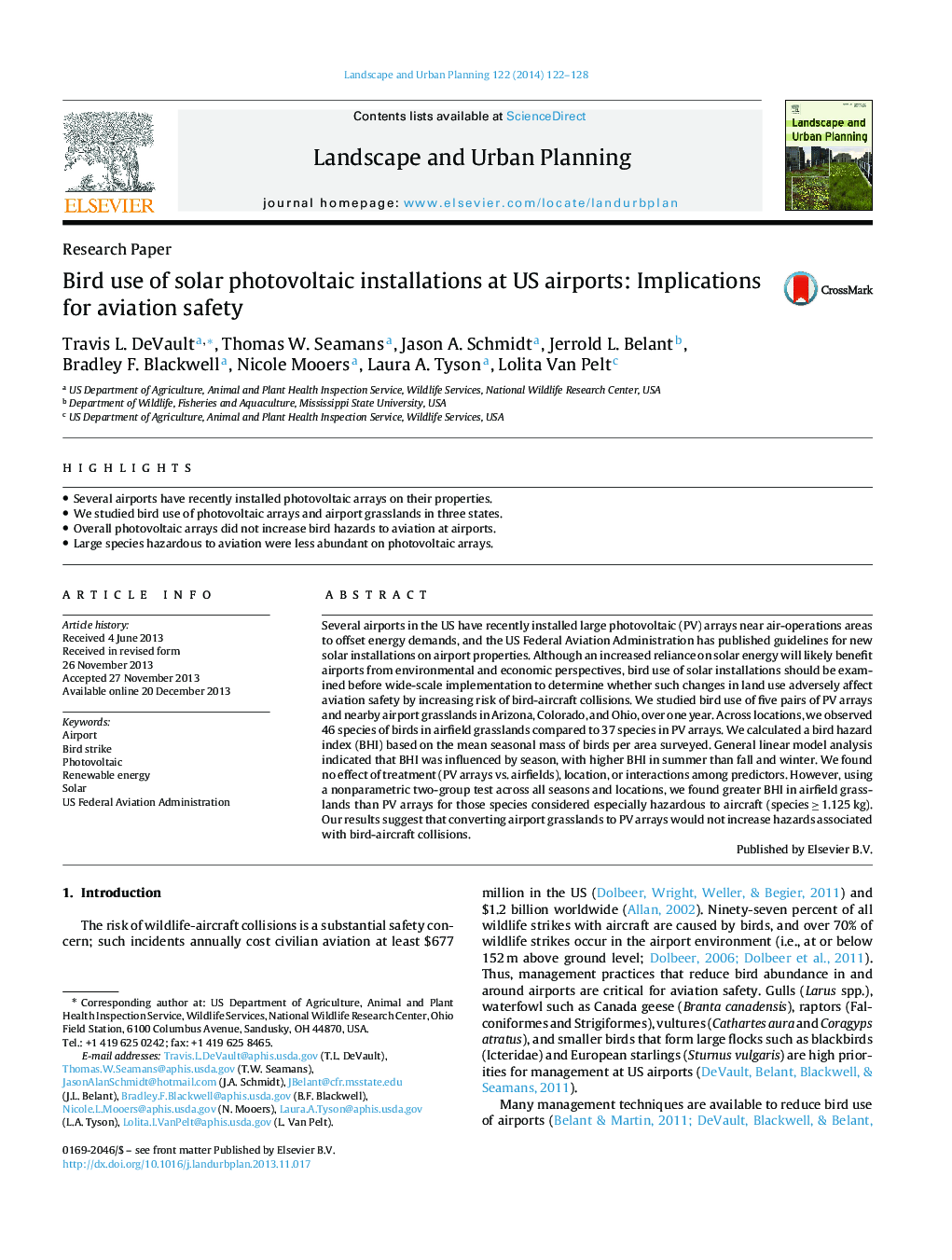| Article ID | Journal | Published Year | Pages | File Type |
|---|---|---|---|---|
| 7461736 | Landscape and Urban Planning | 2014 | 7 Pages |
Abstract
Several airports in the US have recently installed large photovoltaic (PV) arrays near air-operations areas to offset energy demands, and the US Federal Aviation Administration has published guidelines for new solar installations on airport properties. Although an increased reliance on solar energy will likely benefit airports from environmental and economic perspectives, bird use of solar installations should be examined before wide-scale implementation to determine whether such changes in land use adversely affect aviation safety by increasing risk of bird-aircraft collisions. We studied bird use of five pairs of PV arrays and nearby airport grasslands in Arizona, Colorado, and Ohio, over one year. Across locations, we observed 46 species of birds in airfield grasslands compared to 37 species in PV arrays. We calculated a bird hazard index (BHI) based on the mean seasonal mass of birds per area surveyed. General linear model analysis indicated that BHI was influenced by season, with higher BHI in summer than fall and winter. We found no effect of treatment (PV arrays vs. airfields), location, or interactions among predictors. However, using a nonparametric two-group test across all seasons and locations, we found greater BHI in airfield grasslands than PV arrays for those species considered especially hazardous to aircraft (species â¥Â 1.125 kg). Our results suggest that converting airport grasslands to PV arrays would not increase hazards associated with bird-aircraft collisions.
Related Topics
Life Sciences
Agricultural and Biological Sciences
Ecology, Evolution, Behavior and Systematics
Authors
Travis L. DeVault, Thomas W. Seamans, Jason A. Schmidt, Jerrold L. Belant, Bradley F. Blackwell, Nicole Mooers, Laura A. Tyson, Lolita Van Pelt,
